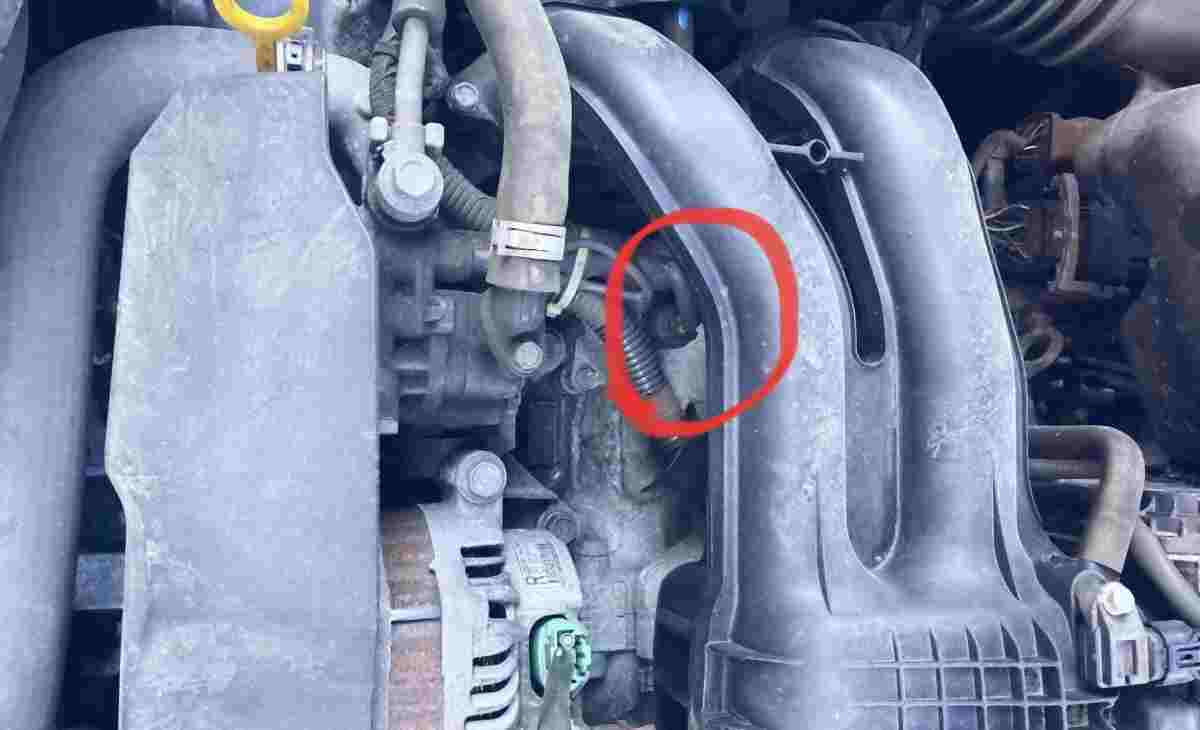The first question that comes to mind when you ask how to bypass a coolant temp sensor is, “Why would you want to bypass it when you can simply and inexpensively replace it with a new one?”
Typically, they are not very pricey. If it is circumvented, driving performance will decrease. A car with an ECU might overheat because the ECU thinks the engine is cold. Additionally, the car will stutter because there is not enough gasoline if the engine is genuinely cold but the ECU thinks it is hot.
Now that you are aware of whether bypassing a coolant temperature sensor is essential, we can now move to how to bypass coolant temp sensor.

What is a coolant bypass sensor and what does it do?
The engine coolant temperature sensor is also known as the coolant temperature switch. It is a sensor for the engine management system that gauges the coolant temperature. Engine performance concerns will result from any ECT sensor defects.
In order to get an exact measurement of the current engine temperature, the ECU provides a controlled voltage to the CTS. Temperature variations affect the sensor’s resistance, which enables the ECU to track temperature changes—see Ditex.
The ECU uses this reading to determine the coolant temperature and then modifies the timing of the ignition, fuel injection, and fuel mixture in addition to managing the on and off times of the electric cooling fan. Additionally, a gauge on the dashboard receives an accurate engine temperature measurement thanks to this information.
How to bypass the coolant temp sensor
It is quite difficult to bypass the sensor and often times, you must replace the coolant temp sensor, thus in this situation, you must adhere to the following procedures to know the next step to take. Check below:
- Be familiar with the system’s operation on the particular car.
- From there, decide whether there is an issue with the sensor’s design or functionality.
- Normally, a two-wire connection would be disconnected at the sensor or jumped across the two terminals, but it is crucial to understand how it works and what you will be doing first.
- Disable the sensor
How do I turn off the coolant temp sensor?After the engine and coolant have cooled, disconnect the battery. Take off any possible plastic engine covers. Locate the sensor measuring coolant temperature. If required, cleanse the coolant system or partly empty the cooling system.
To detach the electrical connection from the sensor, push the tab and remove the connector.
Symptoms of a bad coolant temp sensor
Below are possible signs that your coolant temp sensor is bad:
Overheating engine
The engine will overheat if there is a problem with the cooling system in your car. Since maintaining a stable engine temperature is the cooling system’s main goal. If a crucial part, like the coolant temperature sensor, fails, the engine may overheat.
The ECU receives coolant temperature information from the engine coolant temperature sensor. Engine overheating may result from improper communication.
Check engine light on
One of the first symptoms of a bad coolant temperature sensor is likely to be the check engine light, which will most likely show on your dashboard.
The engine light will turn on if the computer detects a problem with the sensor’s circuit, signaling that the car needs to be inspected. You should use an OBD2 scanner to verify the fault codes if your dashboard displays a check engine light.
Poor fuel economy
Making sure the right fuel mixture is used as part of the coolant temperature sensor’s duty to accurately report your car’s coolant temperature. The amount of fuel used increases as engine temperature drops.
As a result, more gasoline will be used than required if your ECT shows a cool temperature while your engine is warm or hot. Coolant temperature sensors typically show a lower temperature than what is the case when they malfunction.
Dark smoke from the exhaust
Due to an inaccurate engine temperature indication, the ECU may enrich the fuel mixture to the point where the combustion process becomes challenging. The exhaust pipe will produce thick, black smoke as more gasoline burns there.
Unusual temperature readings
If you notice a greater fluctuation in your engine temperature or if it seems higher or lower than normal when you’re driving, it may be the engine coolant temperature sensor.
Have your cooling system checked by a professional if your engine doesn’t seem to be warming up as it should. Although it may be colder outdoors, it’s also conceivable that the recorded temperature is inaccurate and is lower than it is.
Poor engine performance
It’s also possible that the engine coolant temperature sensor in your car is malfunctioning. Low coolant temperature signals can be sent by a damaged engine coolant temperature sensor. When this is not the case, it may also send a false indication of an elevated coolant temperature.
The ECU considers that the engine is overheating when it gets a signal from the coolant temperature sensor showing that the coolant temperature is too high.
FAQs
Does the coolant temp sensor control the fan?
The cooling fan may start or stop when the control system gets the temperature from the CTS. It could also suggest that the fuel mixture has to be increased or make exhaust gas recirculation possible.
Can a temperature sensor affect engine starting?
A no-start situation won’t be triggered by the sensor. It can just lead to a challenging start and a wealthy or lean state.
Conclusion
Knowing how to bypass coolant temp sensor is one of the ways to avoid taking your car to a technician for the time being. Although the process of bypassing your car’s coolant temp sensor is possible, it is never advisable because it can cause more damage to your car.
If you notice your car has a bad coolant temp sensor, you should seek the help of a technician immediately.


